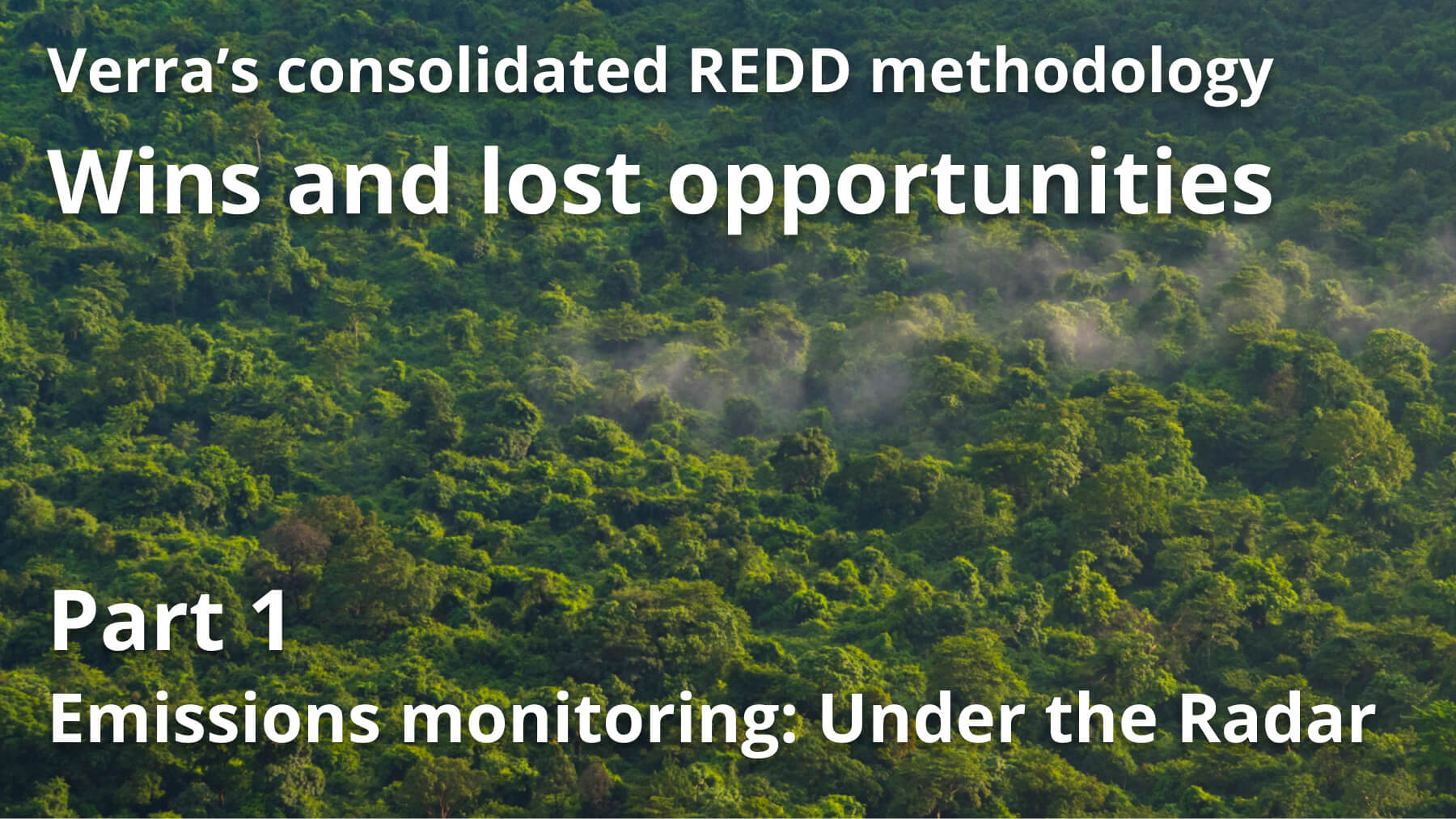
Verra’s consolidated REDD methodology: Wins and lost opportunities, in four parts
Part 1: Emissions monitoring: Under the Radar
Part 2: Baselines: All We’ve Been Waiting For?
Part 3: Baseline revision schedule: Timing matters
Part 4: Permanence and Additionality: Waiting in the Wings
Part 1. Emissions monitoring: Under the Radar
While a lot has been written about baselines, there has been a brewing issue under the surface that has gotten little attention: the monitoring and estimation of emissions. Poor monitoring can result in projects claiming too many credits.
Under Verra’s consolidated REDD methodology (VCRM), new guardrails have been introduced for the monitoring of two key parameters that are used to estimate emissions from deforestation: the carbon stock in forests (i.e. the emission factors) and forest loss (i.e. activity data) for the project period.
The new guardrails may be effective for constraining estimates of the amount of carbon in forests. However, after assessing over 70 REDD projects, Calyx Global has noticed that projects tend to see less deforestation than we do during the crediting period, so we’ll be watching to see whether VCRM’s new guidance brings us closer together.
We see three big wins for emissions monitoring under VCRM…
First, all REDD projects will be required to monitor forest degradation. Degradation at least tripled the disturbed forest area in over half of 44 projects we reviewed recently; it doubled the affected area for another 25% of the projects (and for the rest, the increase was 20-70%). Degradation has been a large missing piece of reported emissions; VCRM lays the groundwork to change that.
Second, projects will undertake a far more comprehensive uncertainty analysis and will be required to take deductions for uncertainty. Uncertainty will be required for all carbon pools and forest strata, including for calculation parameters such as wood density, carbon fraction, and root:shoot ratio. VCRM includes guidance on propagating these uncertainties to determine the total uncertainty and on calculating deductions for uncertainty over 10%. That is a big win.
Third, if uncertainty of the activity data (hectares of reported forest loss) is greater than 10%, the project will be required to increase the number of hectares they use to calculate reported emissions. Assessing and adjusting for this specific uncertainty is a win.
…and one loss for conservatism
On the downside, the adjustment for uncertainty seems very small. If uncertainty of the deforested area is ± 50%, the project would increase the number of hectares by 13%1; if it were ±100%, the number of hectares would increase by 26%. The same scaling applies to discounting for uncertainty of total project emissions as well. This seems too small an adjustment to ensure conservative estimates of emission reductions and also to incentivize the improvement of monitoring over time.
Check back tomorrow to find out about changes to the baseline under VCRM.
- https://verra.org/wp-content/uploads/2023/04/MD00XX-Module-for-Avoiding-Unplanned-Deforestation-2023.04.12-public-draft-1-1.pdf equation 33, page 38.
Get the latest delivered to your inbox
Sign up to our newsletter for the Calyx News and Insights updates.
